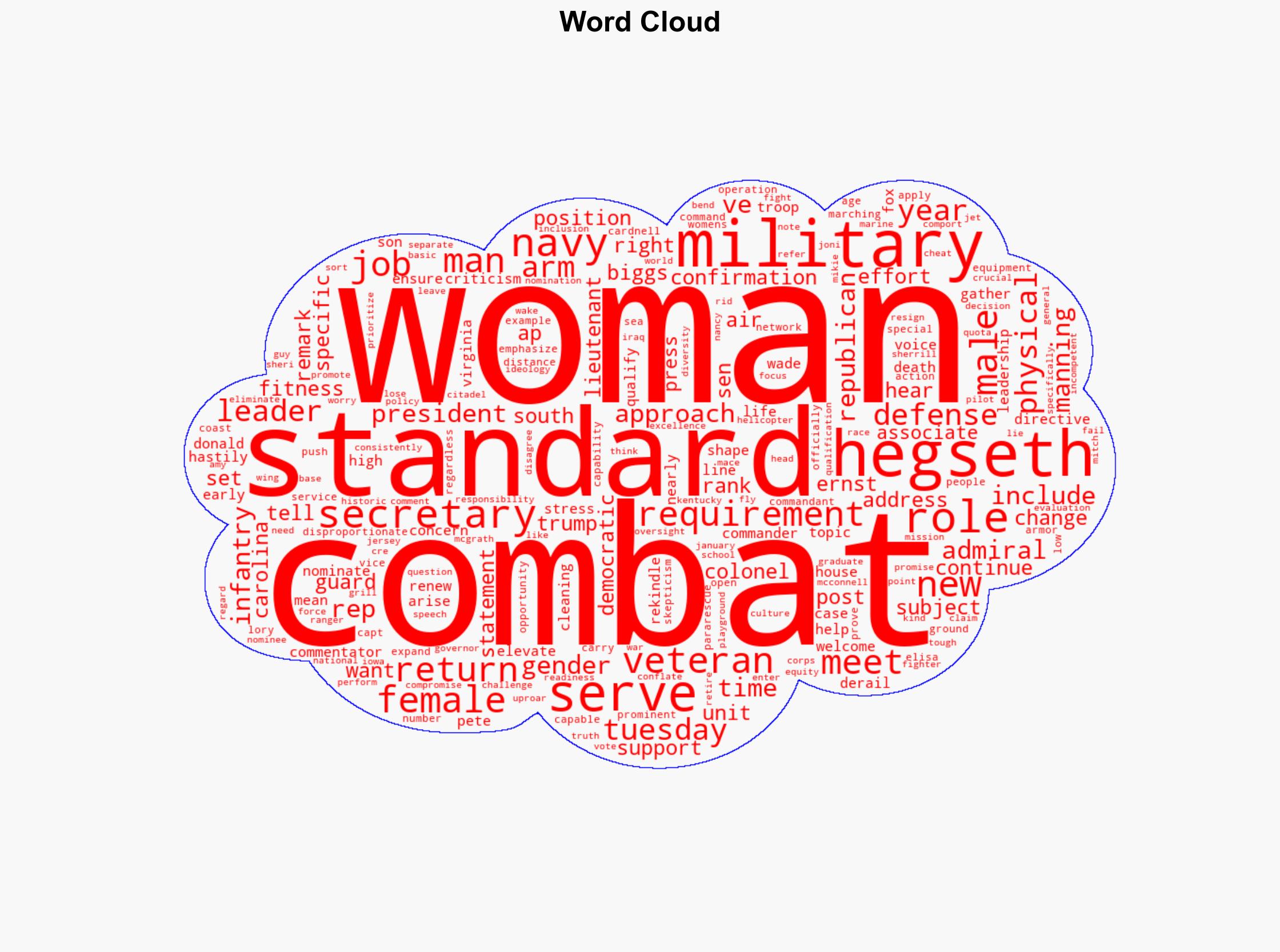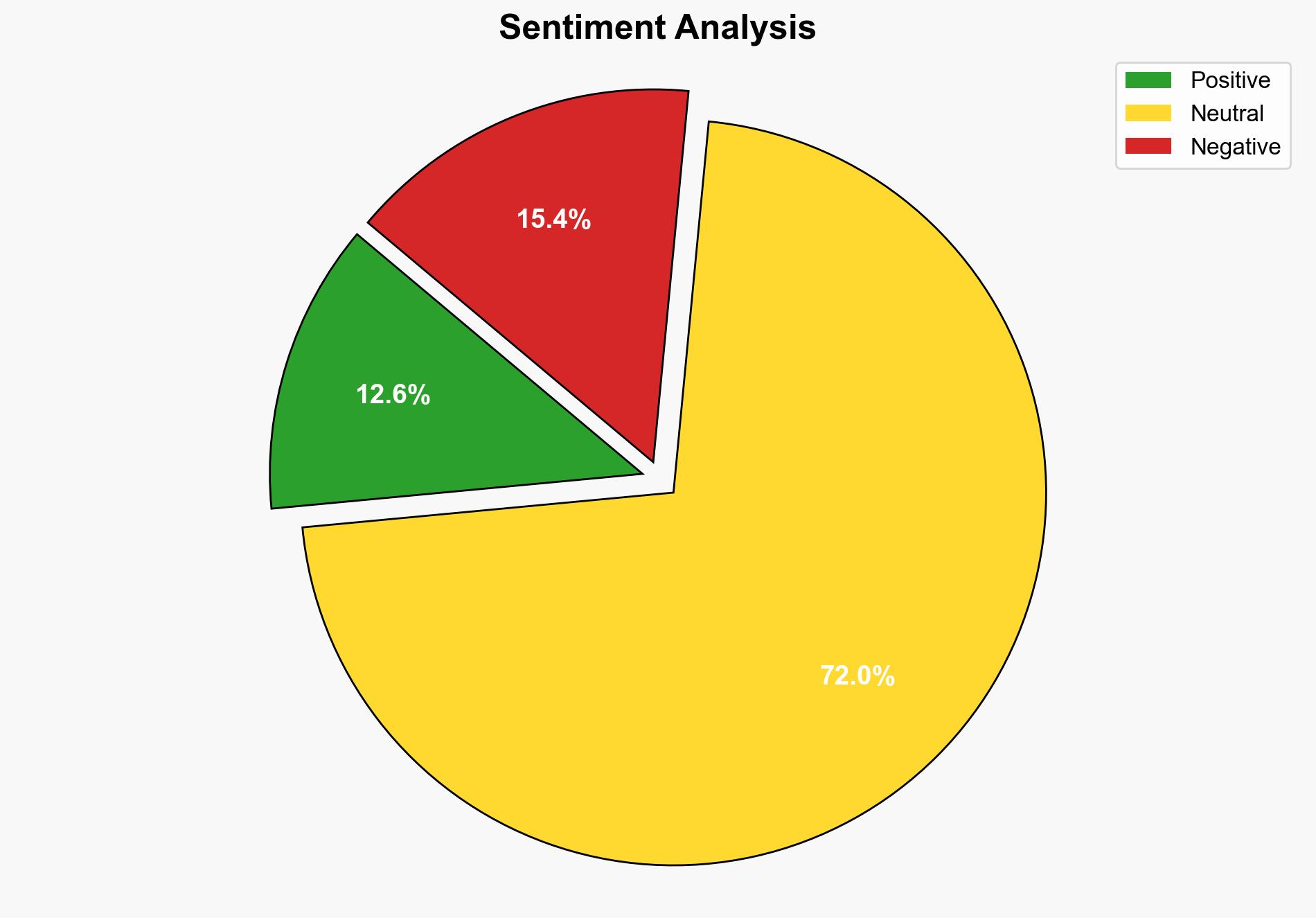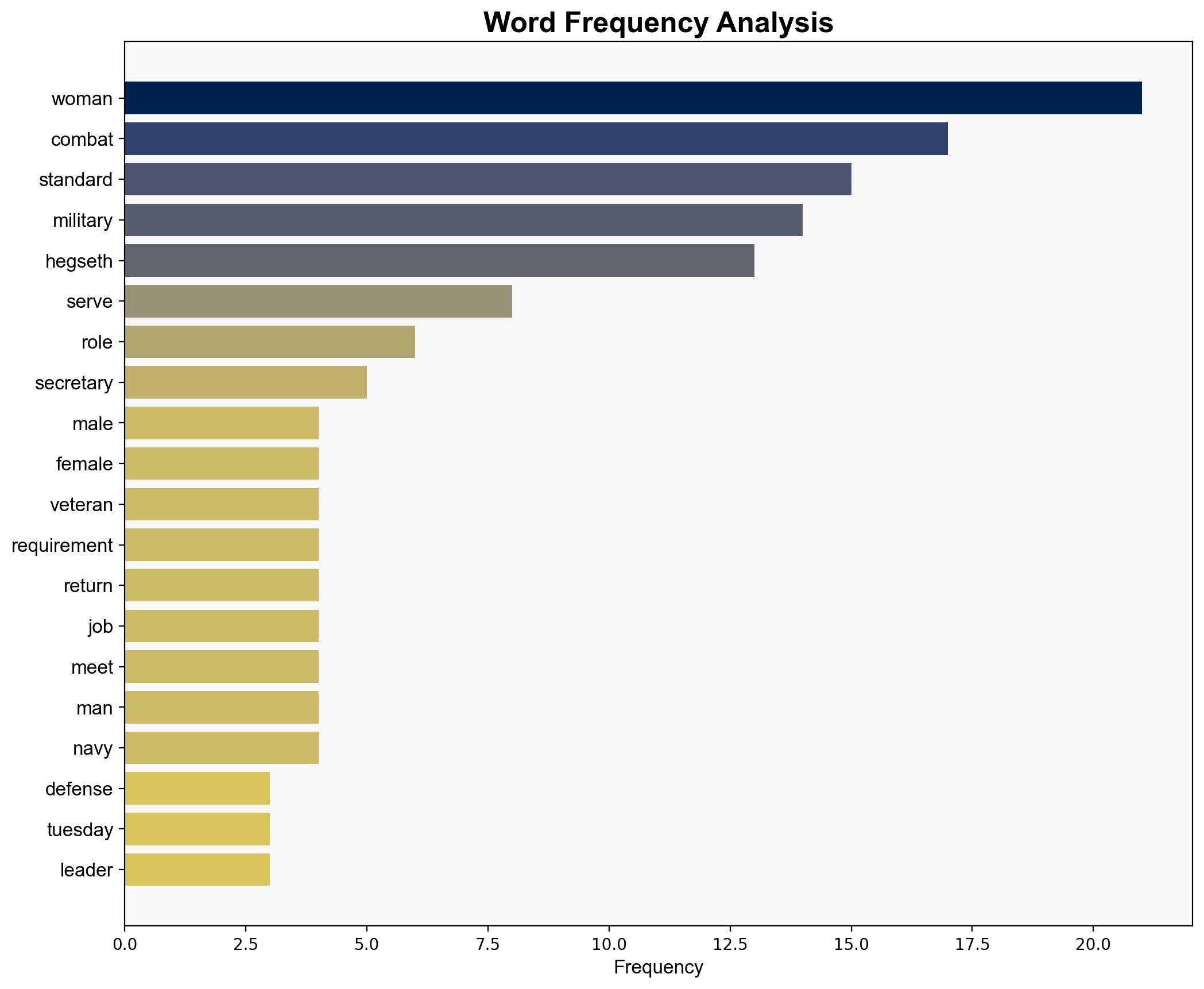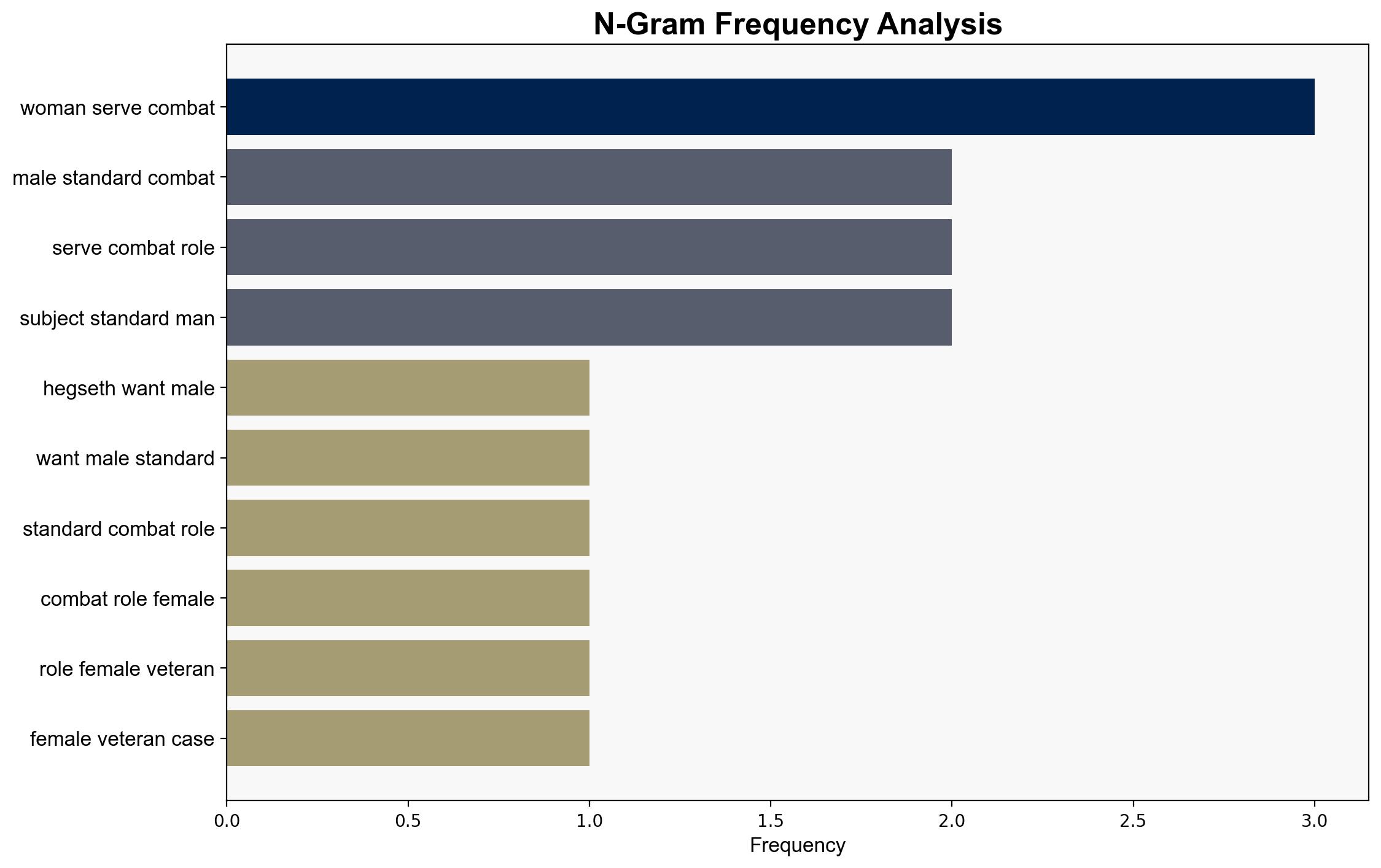Hegseth wants male standard for combat roles Many female veterans say thats already the case – WTOC
Published on: 2025-10-01
Intelligence Report: Hegseth wants male standard for combat roles Many female veterans say that’s already the case – WTOC
1. BLUF (Bottom Line Up Front)
The debate over combat role standards in the military, as highlighted by Pete Hegseth’s comments, reflects a broader tension between traditional military norms and evolving gender integration policies. The most supported hypothesis is that current standards are already gender-neutral but perceived differently due to political and social narratives. Confidence Level: Moderate. Recommended action: Conduct an independent review of current combat standards and their implementation to ensure transparency and address misconceptions.
2. Competing Hypotheses
1. **Hypothesis A**: Current military standards for combat roles are already gender-neutral, and the perception of different standards is due to political rhetoric and social biases.
– **Supporting Evidence**: Female veterans, such as Elisa Cardnell and Amy McGrath, assert that the standards are the same for both genders. Reports indicate that women have successfully met these standards in various roles.
2. **Hypothesis B**: There is a systemic bias in the military that results in unofficially lowered standards for women in combat roles, driven by political and social pressures.
– **Supporting Evidence**: Pete Hegseth’s comments and the push for a “male standard” suggest a belief that current standards are insufficiently rigorous for women.
3. Key Assumptions and Red Flags
– **Assumptions**: Hypothesis A assumes that all military branches uniformly enforce standards without bias. Hypothesis B assumes that political and social pressures significantly influence military policy.
– **Red Flags**: Lack of transparent data on pass/fail rates for men and women in combat roles. Potential bias in reporting from politically motivated sources.
– **Blind Spots**: The impact of physical differences on performance in combat roles is not fully addressed, nor is the potential for unconscious bias in evaluations.
4. Implications and Strategic Risks
– **Patterns**: Ongoing debates about gender roles in the military could lead to decreased morale and cohesion if not addressed transparently.
– **Cascading Threats**: Misalignment between policy and practice could lead to legal challenges and impact recruitment and retention.
– **Potential Escalation**: If perceived biases are not addressed, it could lead to increased polarization within military ranks and among the public.
5. Recommendations and Outlook
- Conduct a comprehensive audit of combat role standards and their enforcement across all military branches.
- Enhance transparency by publishing anonymized performance data to counteract misinformation.
- Scenario Projections:
- Best: Clear communication and data transparency lead to enhanced trust and cohesion.
- Worst: Continued perception of bias leads to legal challenges and reduced recruitment.
- Most Likely: Gradual policy adjustments and increased dialogue mitigate tensions.
6. Key Individuals and Entities
– Pete Hegseth
– Elisa Cardnell
– Amy McGrath
– Mikie Sherrill
– Joni Ernst
– Nancy Mace
7. Thematic Tags
national security threats, military policy, gender integration, political rhetoric





